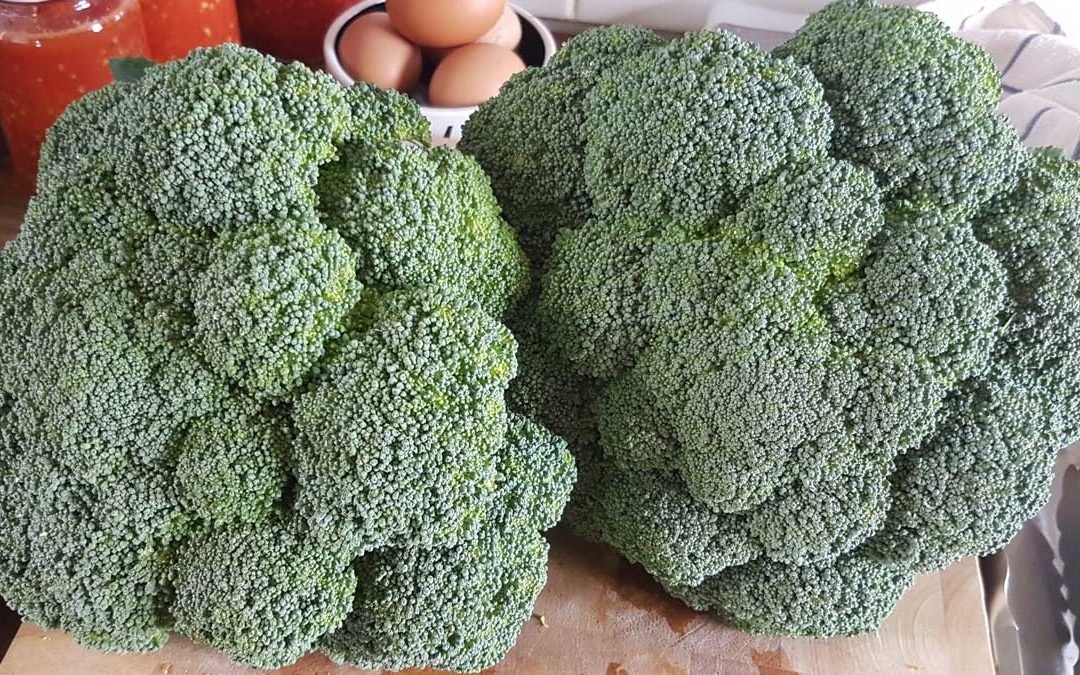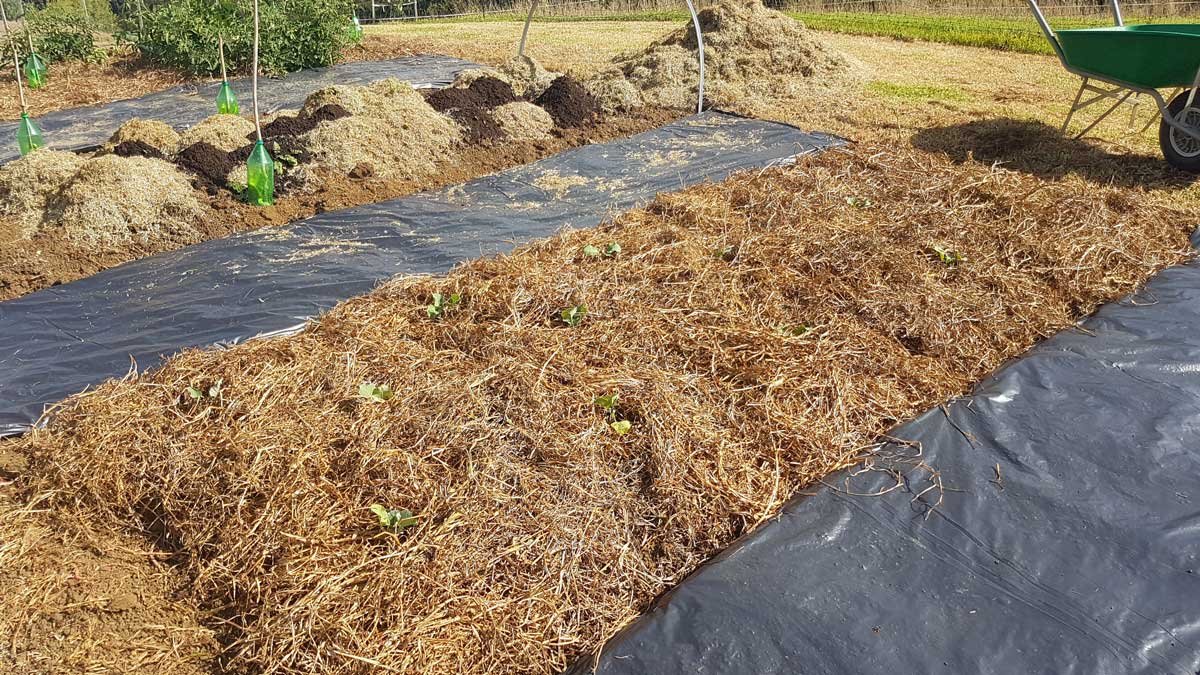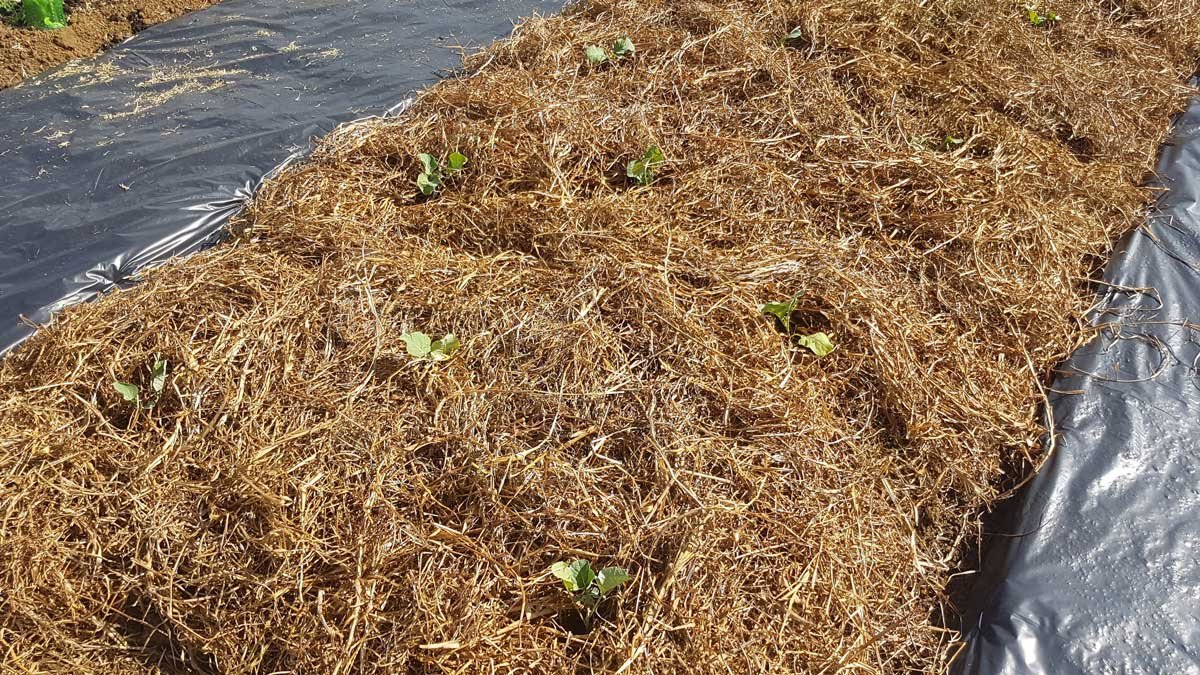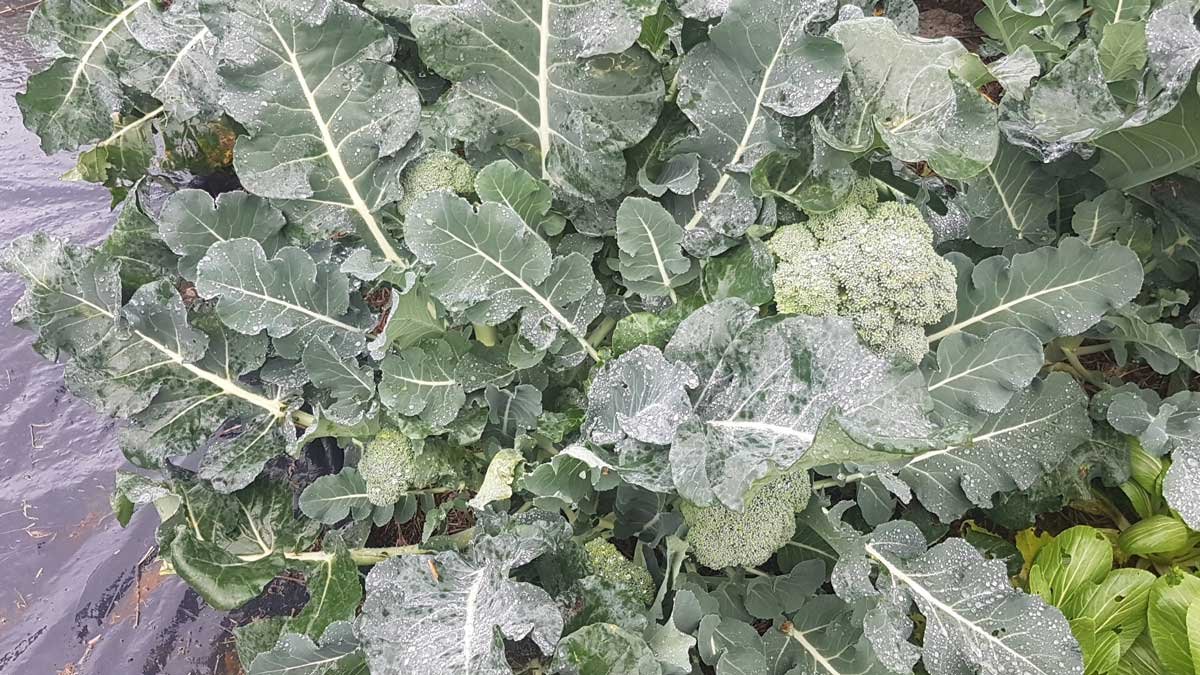Broccoli is probably my favourite of the green vegetables. I could eat it every day, but it only grows in the cooler months in our climate. Like most brassicas, when it’s too warm, it shoots to seed. It’s one of the things you’ll find an abundance of in my winter garden.
This year I planted 12 broccoli seedlings in late February. I chose seedlings over seeds because they are faster and easier, and I just wanted to get them in. We prepped the garden bed by hoeing in manure, and covered it in hay mulch I made over summer.
Before planting, I sprayed the seedlings with BT – a bacteria that makes caterpillars die of a really bad tummy ache. We still had a lot of green caterpillar and armyworm activity, so this gave the plants a chance to get big enough to handle them.
When we planted, I added a small amount of organic general fertiliser and sulphate of potash to the planting hole. The sulphate of potash provides potassium, which is essential to the broccoli for forming heads.
Then we covered the plants in insect netting. We also used slug pellets – I often do when the plants are small. Eventually they get big enough that it doesn’t matter, but they need to survive to that point in the first place. All of this preparation gave the plants a great start, and I think has made the difference that is now giving us such an amazing season.
When I purchased my seedlings, there were two different varieties available, so I got a punnet of each. I was hoping they’d mature at different speeds to space my harvest.
They certainly did mature at different speeds. We were eating the ‘side sprouter’ a couple of weeks before the ‘marathon’ was ready. But in the month since, the ‘marathon’ has produced significantly larger heads, was better at resisting going to seed, and is producing way more supermarket-sized heads than I ever believed possible from one plant. I can see why it’s called ‘marathon’.
After pulling off the main head of the plant (some of which weighed in at over a kilogram), I left them in the ground to see what they would do. It turns out “what they do” is produce up to 5 (so far) additional supermarket-sized heads off the side of each plant.
In fact ‘marathon’ is doing so well, I’ve ripped out the ‘side sprouter’ to prevent cross-pollination and I’m letting one of my largest heads go to seed. What I don’t know is whether those seeds will turn out to be ‘marathon’ plants.
Doing some research, I found ‘marathon’ seeds through McGregors. I’ve got a few of them germinating now for a spring harvest, but at $4.00 for 40 seeds, they’re pretty expensive seeds. Overseas, the ‘marathon’ variety is labelled as being F1. But both McGregors and the commercial supplier I’ve found here in New Zealand don’t label the variety as F1 (here’s an explanation if you’re a little confused about what F1 means).
The price of the seed and vigour of the plants indicate that even though they’re not labelled that way, these plants might be F1 hybrids. Next year, I’ll grow on the seeds I’ll be saving from this season’s plant. They may or may not do as well as their parent. But if they do well, I’ll select the best and harvest seeds from the child plant. Eventually – if I’m lucky – I’ll have a broccoli strain that produces excellent plants with multiple heads in our climate.

This is how I grow things in my garden, you may have noticed the pattern by now. I experiment with varieties until I find the ones that do well for me. Then I keep growing them on and on and on. It’s been expensive up-front to purchase seeds, plants, and starters, but the plan is it gets less expensive over time as we keep our own varieties going.
Where I have surplus seed, I sell it in my online store. Maybe one day I’ll be selling my own version of broccoli that starts now, with this story, in my garden.










